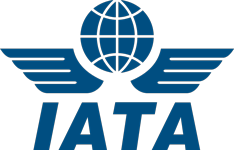Drawback is a refund of specific duties, taxes, and fees collected when goods are imported into a country. You may be entitled to such reimbursement if you export goods previously imported with duties paid.
One intention of drawback is to alleviate the burden of duties on importers when goods are exported or otherwise destroyed, with the hope that the perks would encourage the domestic production of articles for export, and in turn, help to stimulate both U.S. foreign trade and labor in the manufacturing sector.
Duty drawback programs are not new to international shipping—the United States has had some form of duty drawback system in place since 1789—but the practice is still drastically underutilized by shippers. It is estimated that up to $3 billion in drawback is up for grabs annually, but just $600 million are actually claimed. That means there is a potential $2.4 billion left on the table. One reason so much duty drawback goes without being paid out is because many American businesses simply do not realize that they qualify for the reimbursement.
Note: If you believe you have been exported imported products that qualify for drawback, it’s not too late to receive your dues. U.S. Customs and Border Protection (CBP) provides a one-time allowance for importers to retroactively collect up to three years of drawback.
The following is required by CBP to receive drawback:
- For exported goods, proof of export: for example, a bill of sale or airway bill
- For destroyed goods, proof of destruction: A CBP officer must witness the destruction of the goods.
- Proof that duty was paid on the original import
- Unused merchandise requires a notice of intent signed by CBP before the goods are exported.
Without the above documentation, drawback claims cannot be completed.
Industries that have made the most use of the CBP’s Duty Drawback program include chemicals, steel, tobacco, pharmaceuticals, automotives, electronics, textiles, apparel and footwear, and certain food products like wine, sugars, and citrus.
You can find U.S. Customs and Border Protection forms, references, and information regarding specific topics relating to drawback, such as merchandise processing fees, petroleum products and sample application templates, here.
On the other hand, you probably are not a good candidate for duty drawback if:
- You only plan to export one time
- The items you are exporting were imported as duty-free products
- The originally imported items qualify for a Free Trade Agreement
Unfortunately, duty drawback is a privilege and not a right; in turn, landing a drawback check does come with drawbacks of another kind. The benefits of applying for drawback are obvious, but you shouldn’t expect the process to be simple, or speedy. Filing for drawback is often involved and it may be many moons before the refund actually reaches your pocket. Besides being a lengthy, complicated endeavor, the administrative costs of setting up a duty drawback program could be extensive. Before you commit to the idea, ensure the payout is greater than the associated losses.
To best avoid complications attaining drawback, you should employ the help of an experienced customs broker, such as CAF Worldwide. Our highly trained customs brokerage professionals will work in a consultative and operational role to assess whether you are a good candidate for duty drawback, and to carry out the administrative processes on your behalf thereafter.
CAF Worldwide is a full-service logistics provider with more than 30 years of international freight forwarding and customs brokerage experience. To find out more about how CAF Worldwide can help you improve your supply chain, give us a call today at 516-444-3700, or send an introductory email to info@cafworldwide.com.













 Copyright 2025 CAF Worldwide. All rights reserved.
Copyright 2025 CAF Worldwide. All rights reserved.